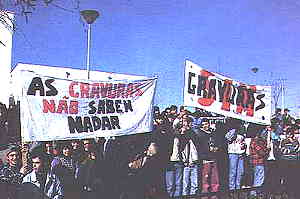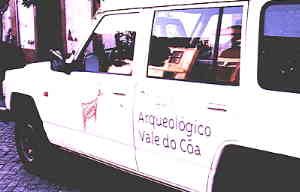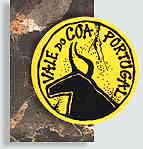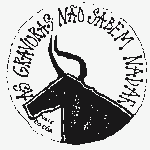TRACCE no. 5 – by M.S. Abreu, A. Arcà, A. Fossati, L. Jaffe
The Movement to save Côa Valley engraved rocks was started and led by Mila Simões De Abreu and Ludwig Jaffe, and internationally sustained by many Archaeological scholars, Institutions and Universities (Universidad de Alcalà de Henares, Institut of Archaeology London, Université de Poitiers, British Academy, Society for American Archaeology, University of Bristol, Australian Academy of the Humanities, University of New Mexico…).
Special Côa

Côa movement
After having seen (being invited few hours before the Pocinho dam level elevation) for the first time in November 1994 the engraved rocks, Abreu and Jaffe (AARP Rock Art researchers and IFRAO representatives) immediately realized the capital importance of the site and the absolute necessity of saving it by stopping the building of the dam.
For the first time archaeological researchers, environmental associations and student organizations (note the peculiar slogan "As gravuras não sabem nadar - The engravings are not able to swim"), worked together to make possible the creation of an Archaeological Park.
The International cooperation was of capital importance, linking scientific advice to media support.
The movement was obviously strongly opposed by EDP and the dam supporters, trying to depreciate the archaeological importance of the engraved panels. In this scenery some “direct dating” values obtained by AMS (A. Watchman) and Microerosion (R.G. Bednarik) methods (under EDP funding, which involved also Dorn and Phillips -Chlorine 36- methods), were utilized in a press campaign, trying to demonstrate a recent dating for the Palaeolithic style figures. The idea was that that if the engravings were Post-Palaeolithic its importance would be inferior. Unsuccessful attempts to sew and mould the rocks were also funded by EDP, damaging in some cases the engraved surfaces.
After a long and passionate "fight", and after the election of a new government in Portugal, finally in November 1995 the building of the dam was officially "suspended" (but not forsaken), to evaluate the scientific importance of the site and to create a commission for the installation of an Archaeological Park.
These events caused a substantial reorganization of Portuguese Archaeology, with the planned creation of the IPA (Instituto Portuguese de Archeologia, under the Direction of the archaeologist V. O. Jorge) and of the Archaeological Park of Côa Valley.

Côa Park Jeep for tourists
Thus being in an organizing phase, and under the spontaneous arrival of a large number of national and international tourists, the Park was inaugurated on August 10, 1996.
Under the direction of the archaeologist J. Zilhão guides has been instructed, booklets, records and cards printed, multimedia applications compiled, and two reception centers has been prepared at Vila Nova de Foz Côa and Castelo Melhor. A third center is planned in Moxagata. From these centers tourists can start a guided tour (by the Park Jeeps, only guided visits are allowed) to Canada do Inferno, Ribeira dos Piscos and Penascosa, the most important engraved sites. The surveillance is assured by a private agency, previously working for the dam and now for the Park.
It is also important to notice that for the first time a Rock Art area encourages the institution of an economic development plan (called "Pro-Côa"), now funded by the Portuguese Government and the European Union.
With the aim of giving a definitive “status” to the Park (and at the same time to the abandonment of the dam), it will be useful to find the way of enlarging the daily number of tourists (also to extend the local economic involvement), and to preserve the natural environment (by the building of some wood-walks), which can easily turn into a dusty barren land.
An International involvement seems also desirable, to find the way of the best multi-oriented scientific study, and to locate a wild-like area, to leave engraved rocks free from any human intervention (many surfaces are actually traced after a complete washing and cleaning), to make possible future analysis of patina (dating) and of engraving techniques.
Angelo Fossati, Ludwig Jaffe
Gravado no Tempo – Etched in Time research project
















Leave a Reply